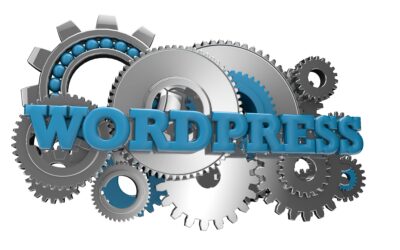To improve the SEO of a site, image optimization is very important. Image optimization can help improve the website’s performance. The fewer the byte the browser has to download, the less competition there is for the client’s bandwidth and faster the browser can download the image and show the useful content on the screen. So for this output we first need to perform some techniques for image optimization.
1. Choose the right image: Finding and choosing the right image is the first step towards the image optimization. There are a lot of free and paid images providing websites from where you can choose images. Below are some resources where you can find different photos to use:
- Istock
- Flickr
- SmugMug
- Google Photos
- Imgur
- Unsplash
2. Choose the right image format: Now when we have chosen the image, the next step is an image format. There are three famous image formats. We need to decide which one is suitable for our image needs.
- JPEG: This is the most commonly used format for images. It stands for Joint Photographic Experts Group. It uses a combination of lossy and lossless optimization to reduce the file size of the image asset. If you need to optimize the screenshots and similar images use this format. It does not support transparency. Its most useful advantage is that it keeps the file size small which is supported everywhere.
- GIF: If you need animation then GIF is one of the best choices. GIF has a limited color palette(256 colors) for that reason it is not recommended for real photographs. But as it has small file size and supports transparent backgrounds, it can be used to make brand logos and other useful website elements.
- PNG: PNG is an alternative to JPEG and GIF. It has better color choices, automatic gamma correction ability, and supports transparent backgrounds. It also has a feature to add a short description about your image which can help Google to categorize the image. But the file size may be larger than JPEG.
3. Scale for image SEO: Image size has a huge impact on the load times. It gets affected the most when the image is actually large but you show it small. For instance when an image is of size 1850x 890pixels but you show it at 700×300 pixels, the real image size still has to be downloaded. You should scale the image for the height and width you want to show it. The CMSs like WordPress helps by providing the image in multiple sizes after upload already. Unfortunately that doesn’t mean the file size is optimized as well, that’s just the image height and width.
4. Reduce file size: You can reduce the file size to smallest size possible. Images have all sorts of metadata that can be optimized or removed as they are not required. You can use tools like imageoptim or websites like JPEGMini or PunyPNG to reduce the file size. You also identify if your image is optimized successfully by using tools like YSlow.
5. Caption: The caption of the image is the text that is shown in close vicinity to, usually below, the image. That text is important for image SEO as well, as people use that text when scanning an article, and so do search engine crawlers. Next to headings, people tend to scan the image and include the caption as well in that scan. Decide whether the image at hand is an image you want to use for SEO as well or not. You should only add a caption if it would make sense to the visitor. Think about the visitor first, don’t add a caption just because you think it will improve your SEO.
6. Use informative file names: Give the name to images that are descriptive and relevant to the image and content. In this way, it will become easy for Google to categorize your image.
7. Add ALT text: alt text means alternative text. It provides the identity of the image to the searcher when he hovers the mouse over the image. Sometimes the browser takes time to load the image, then this alt text can give the idea to the user that what is there in the image. (more information on 136 pages).
8. Create image sitemaps: We can give more information to search engines about the images by adding the image sitemaps. This even allows the search engines to find the images like product images and slider images that are added to the website by using javascript code. This creating image sitemap is really useful while doing image optimization.
9. Geo tag: This is very important data that is not visible to the users but it is gold for search engines that always look for more information. Geotagging is added automatically to many photos taken with smartphones or modern digital cameras that are GPS-enabled. The data are embedded in the photo itself and includes information such as where and when the photo was taken and with what device. You can add geotagging to your website most easily by just adding images that already contain geotagging data within them.
10. Image links: The anchor text of links is a very important factor in determining the relevant keywords for the page being linked to. For image links, the alt text serves as the anchor text, so alt text becomes extra important for image links. So, if you use banners or badges, you really want to make sure you are using optimal alt text.
11. Lightbox: Lightbox is the thing that appears when a smaller window pops up and dim the rest behind it. It gives the showcased content the same spotlit high-contrast focus of a slide on a lightbox.
Optimizing lightbox
- Keep your lightbox lightweight, It means the lightbox should contain small content. A single message or a single image.
- Use the lightbox to enhance the user’s experience of your content.
- Track user interactions with lightboxes by customizing your analytics so you can make informed decisions.
12. Integrate social media: Social media is a significant way of improving the SEO and customer acquisition strategy. You can add a social media sharing button on your website to integrate your image into social media platforms. To encourage the visitors to share your image to Pinterest you should add a “pin it ” button on every image so that that can share your image to Pinterest.
SEO Content That Provides Value & Insight
Content provides value and unique insights It is very helpful to provide unique and valuable content to your audience. Unique content is straightforward enough, but what this unique content actually means? What is required to make this unique content? Let's discuss...
What are WordPress tags for SEO?
WordPress tags and categories play a vital role in organizing your site’s posts properly. They can help you to increase the web traffic, boost your page views, and offer a great experience to your potential customers. With the proper use of tags and categories, you...
HTML Errors/ W3C Validations
Lots of HTML errors or sloppy coding may be a sign of a poor quality site. While controversial, many in SEO think that a well-coded page is used as a quality signal. 6 reasons why Google advice to validate your html Valid HTML and crawl rate: In Google search console...




